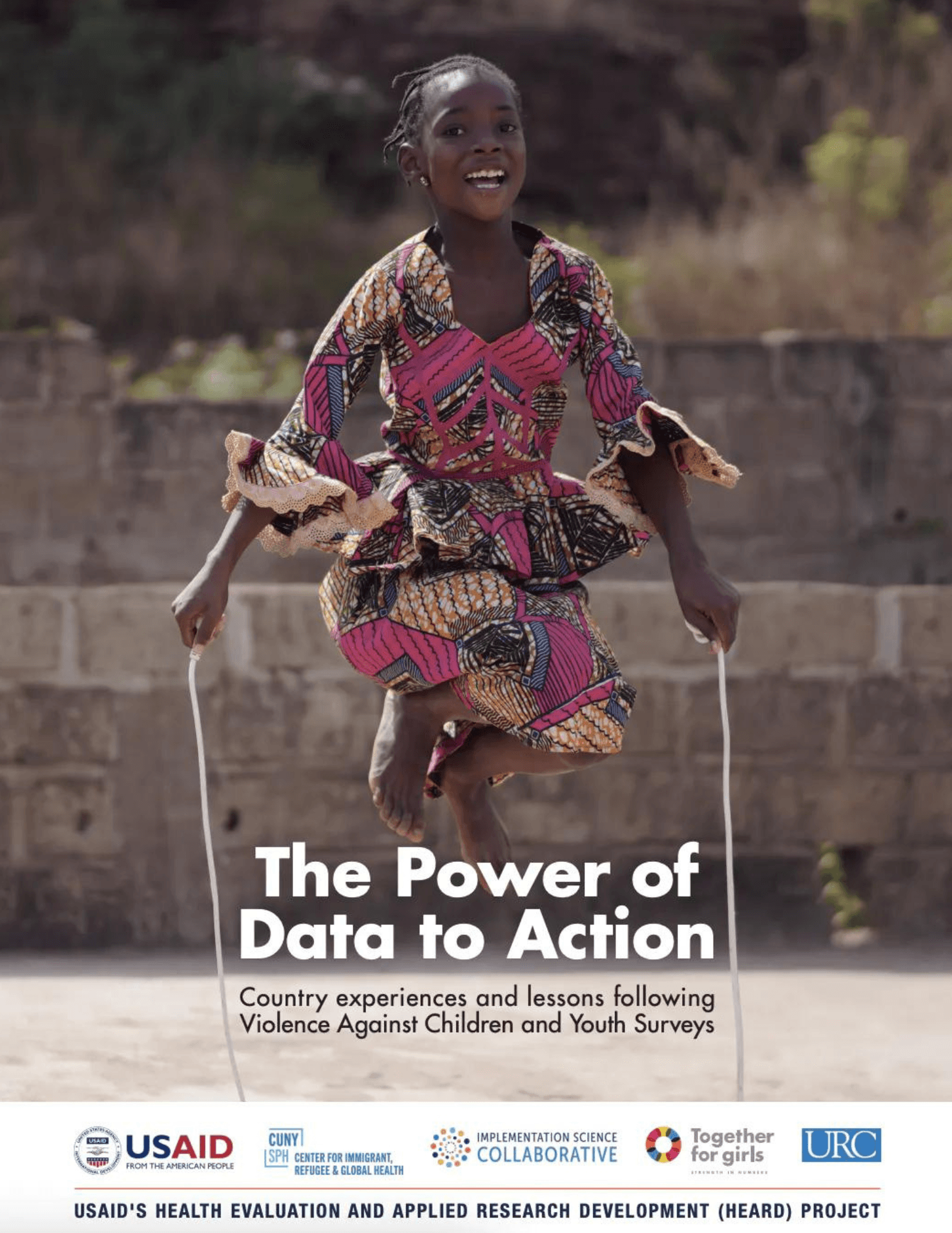The power of Data to Action: Country experiences and lessons following Violence Against Children and Youth Surveys
This report summarizes the first comprehensive review of country experiences in transforming Violence Against Children and Youth Survey (VACS) results into concrete sex- and age-specific improvements for children and young people and into responses to gender-based violence.
Referred to as post-VACS efforts, these include any actions taken to understand, implement and integrate VACS results into policies and/or programs aimed at preventing or ending violence against children; many of these actions have a strong gender lens that identifies and tailors actions recognizing the unique vulnerability of girls.
The analysis synthesizes the views of 225 stakeholders across 20 countries, providing insights into key areas of post-VACS efforts.

Key highlights from the report
The VACS data, and associated processes to use the data, provide evidence that violence against children and adolescents is a knowable, solvable problem.
VACS data provides the foundation for developing interventions that work and measuring progress toward achieving the Sustainable Development Goals.
Coordination across sectors is critical to driving change.
Strong, government-led multisectoral coordination is the single most important factor in translating VACS results into positive action for children. Multisectoral coordination plays a role in every step of the VACS process.
VACS data generate learning and action.
VACS data and associated capacity-building processes generate learning and action, build capacity, and inform national responses to end violence against children.
All areas of VAC need more funding.
Gaps in funding is a barrier in all aspects of prevention and response to VAC beginning with the survey itself, to post-VACS efforts. Almost 90 percent of survey respondents cite inadequate funding as a barrier to post-VACS efforts.